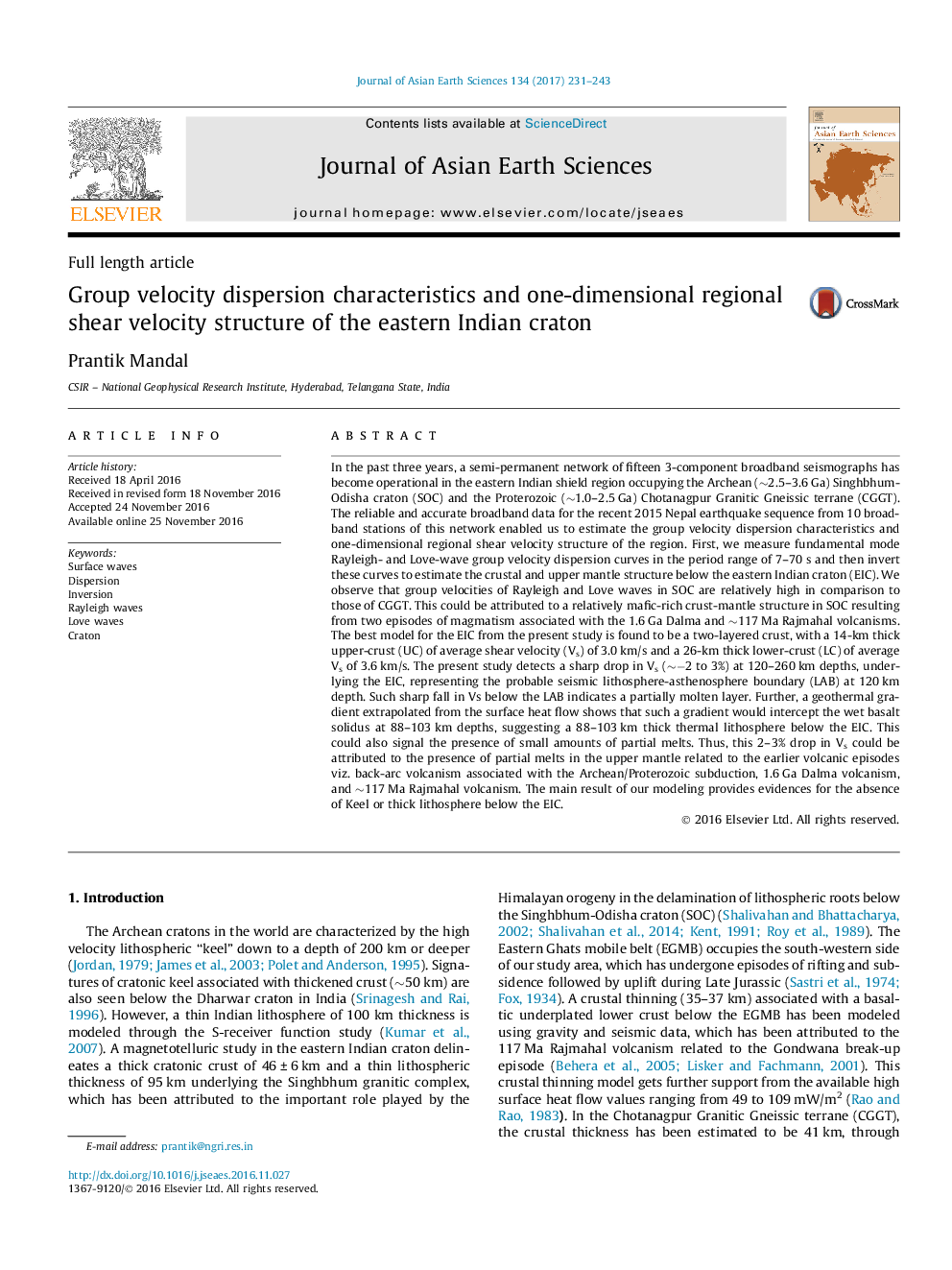| کد مقاله | کد نشریه | سال انتشار | مقاله انگلیسی | نسخه تمام متن |
|---|---|---|---|---|
| 5786183 | 1640337 | 2017 | 13 صفحه PDF | دانلود رایگان |
- 1-D Vs structure of the eastern Indian shield is delineated using surface wave study.
- Rayleigh- and Love-wave group velocity dispersion curves measured at 7-70Â s.
- A drop in Vs (â¼â2 to 3%) at 120-260 km depths, is detected.
- The drop in Vs could be attributed to the presence of partial melts in the upper mantle.
In the past three years, a semi-permanent network of fifteen 3-component broadband seismographs has become operational in the eastern Indian shield region occupying the Archean (â¼2.5-3.6 Ga) Singhbhum-Odisha craton (SOC) and the Proterozoic (â¼1.0-2.5 Ga) Chotanagpur Granitic Gneissic terrane (CGGT). The reliable and accurate broadband data for the recent 2015 Nepal earthquake sequence from 10 broadband stations of this network enabled us to estimate the group velocity dispersion characteristics and one-dimensional regional shear velocity structure of the region. First, we measure fundamental mode Rayleigh- and Love-wave group velocity dispersion curves in the period range of 7-70 s and then invert these curves to estimate the crustal and upper mantle structure below the eastern Indian craton (EIC). We observe that group velocities of Rayleigh and Love waves in SOC are relatively high in comparison to those of CGGT. This could be attributed to a relatively mafic-rich crust-mantle structure in SOC resulting from two episodes of magmatism associated with the 1.6 Ga Dalma and â¼117 Ma Rajmahal volcanisms. The best model for the EIC from the present study is found to be a two-layered crust, with a 14-km thick upper-crust (UC) of average shear velocity (Vs) of 3.0 km/s and a 26-km thick lower-crust (LC) of average Vs of 3.6 km/s. The present study detects a sharp drop in Vs (â¼â2 to 3%) at 120-260 km depths, underlying the EIC, representing the probable seismic lithosphere-asthenosphere boundary (LAB) at 120 km depth. Such sharp fall in Vs below the LAB indicates a partially molten layer. Further, a geothermal gradient extrapolated from the surface heat flow shows that such a gradient would intercept the wet basalt solidus at 88-103 km depths, suggesting a 88-103 km thick thermal lithosphere below the EIC. This could also signal the presence of small amounts of partial melts. Thus, this 2-3% drop in Vs could be attributed to the presence of partial melts in the upper mantle related to the earlier volcanic episodes viz. back-arc volcanism associated with the Archean/Proterozoic subduction, 1.6 Ga Dalma volcanism, and â¼117 Ma Rajmahal volcanism. The main result of our modeling provides evidences for the absence of Keel or thick lithosphere below the EIC.
129
Journal: Journal of Asian Earth Sciences - Volume 134, February 2017, Pages 231-243
